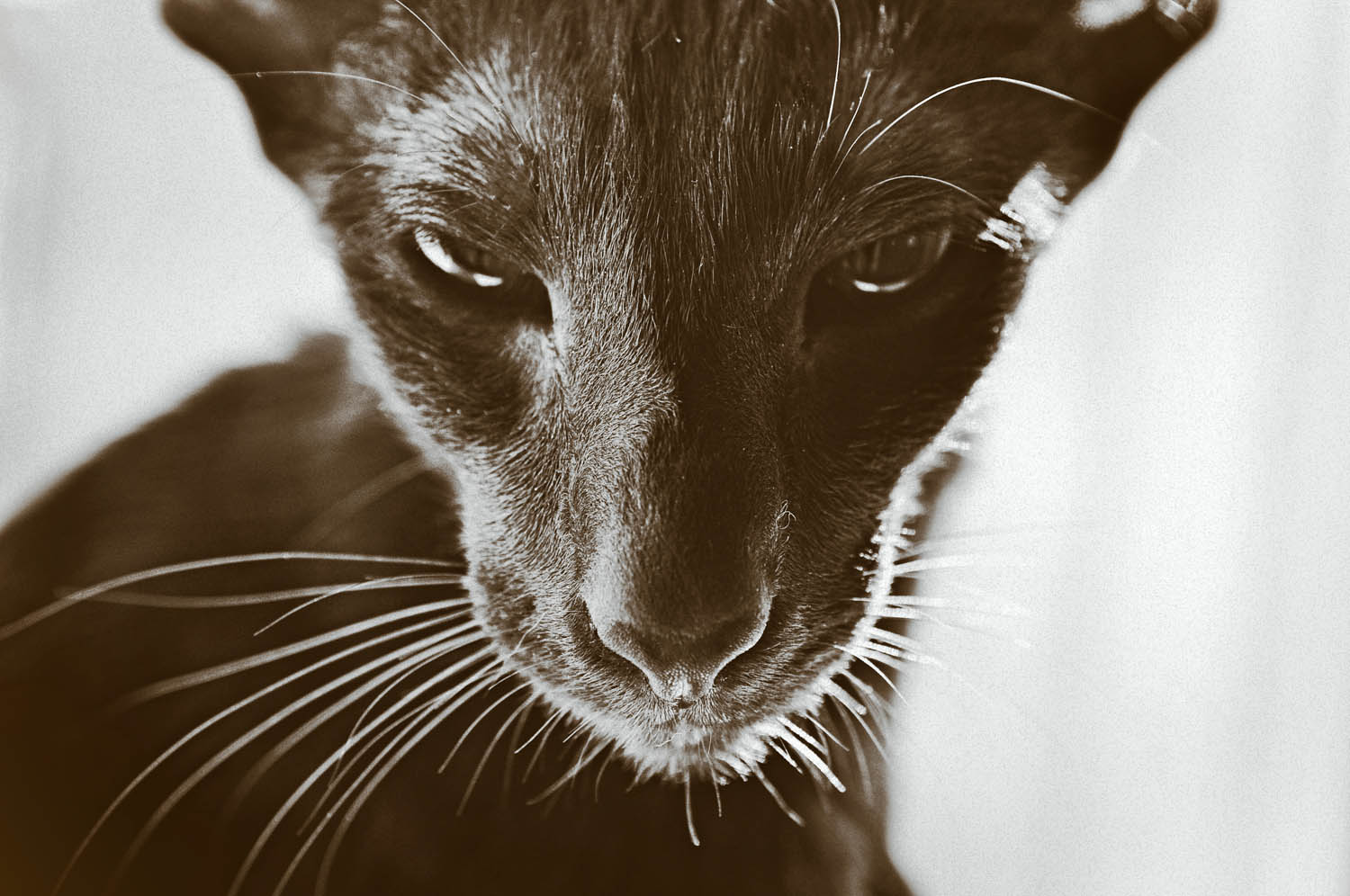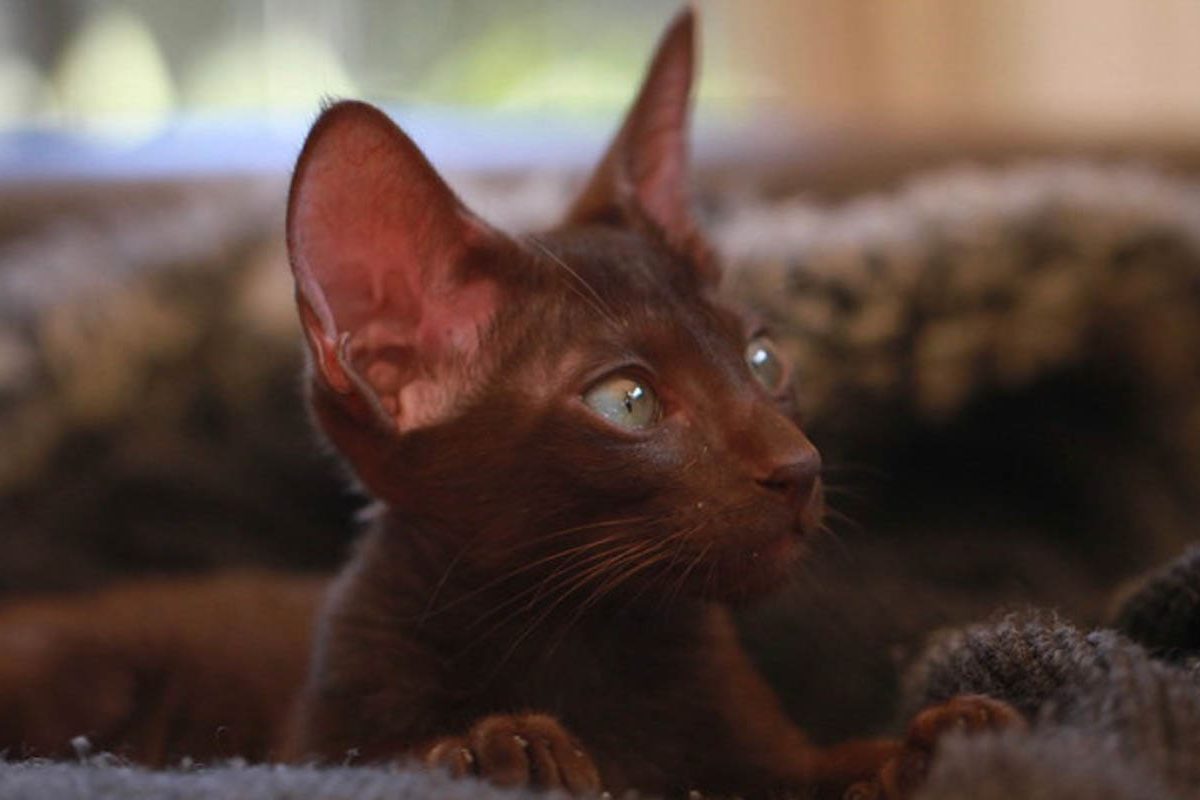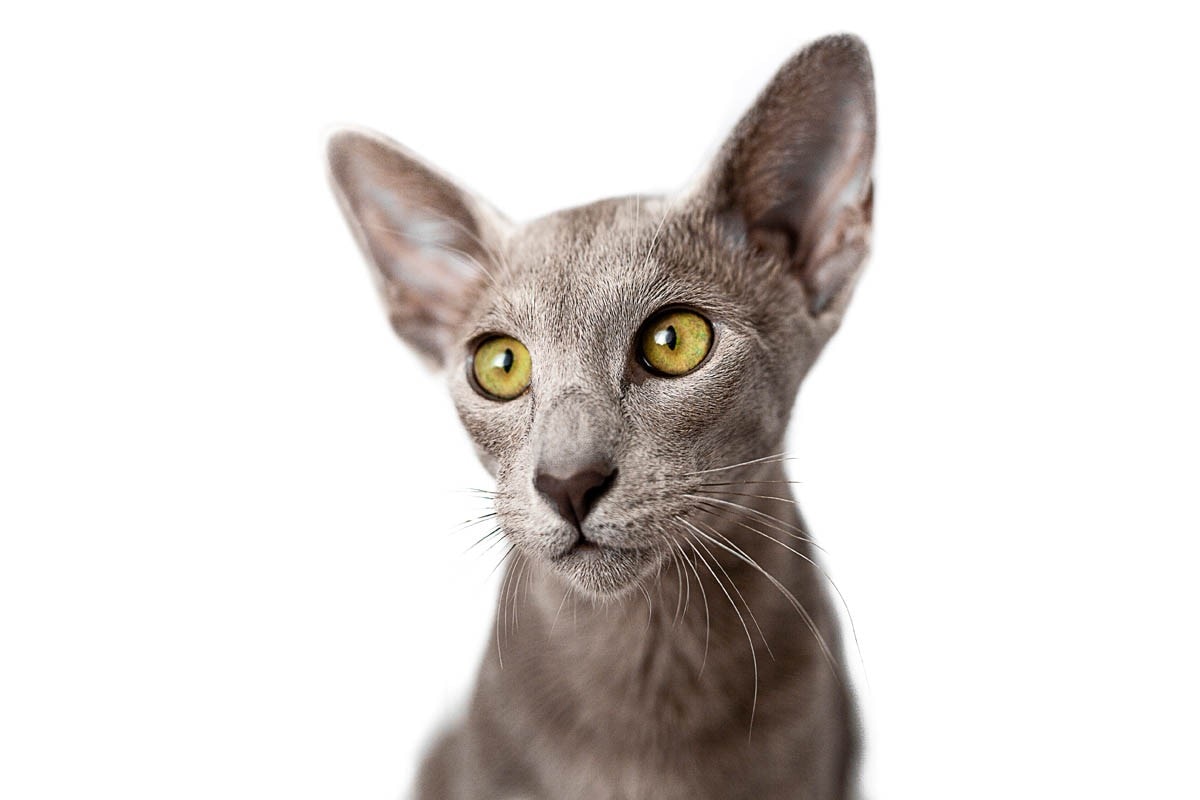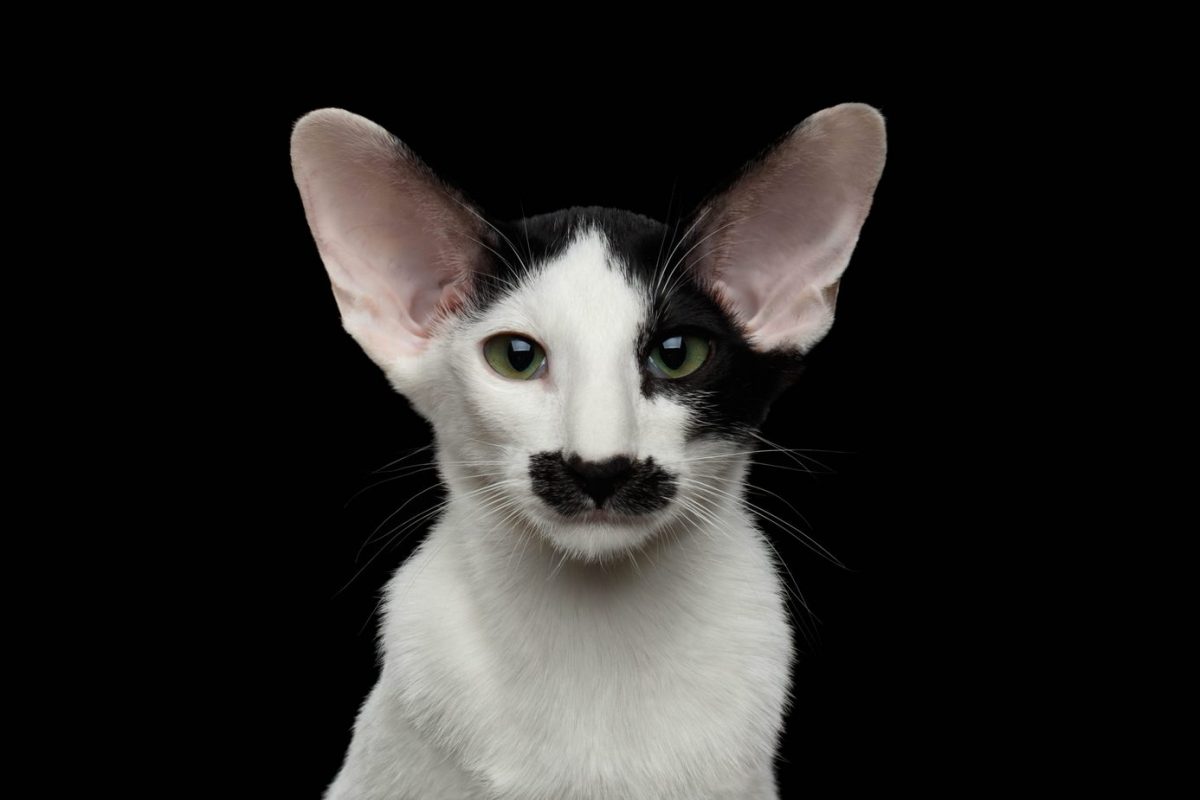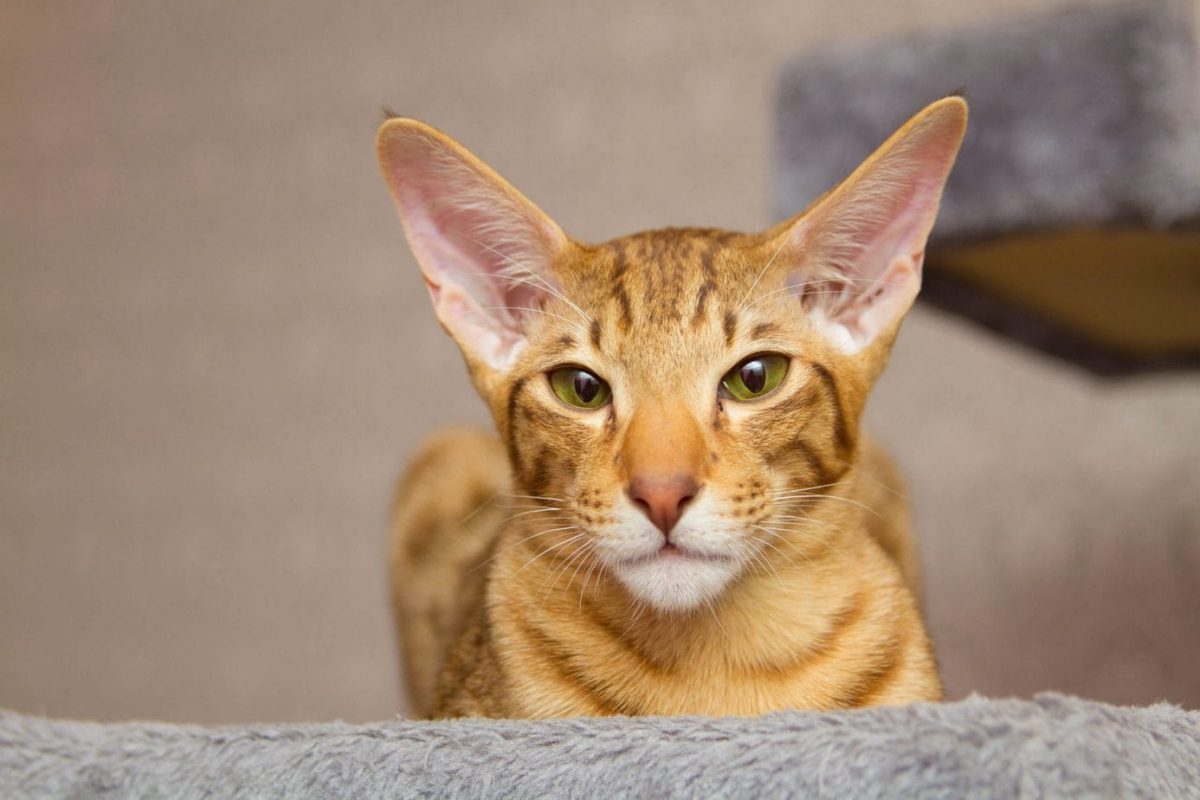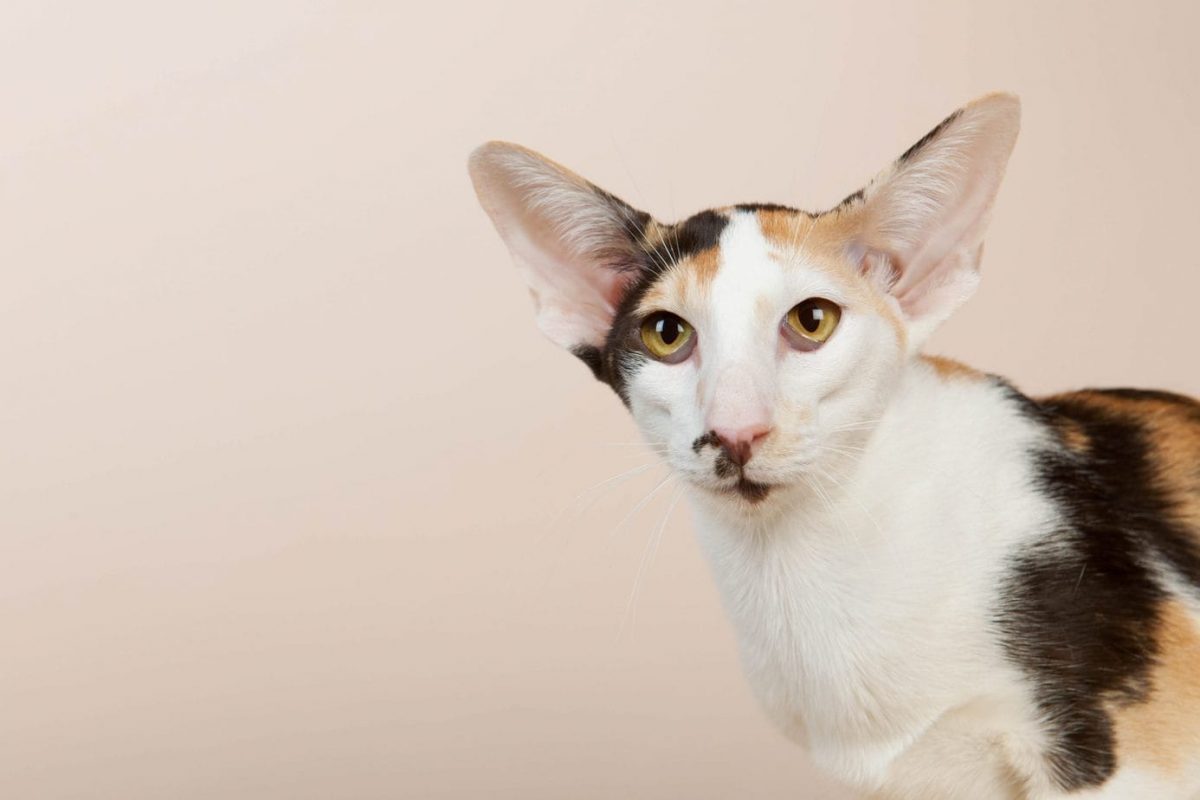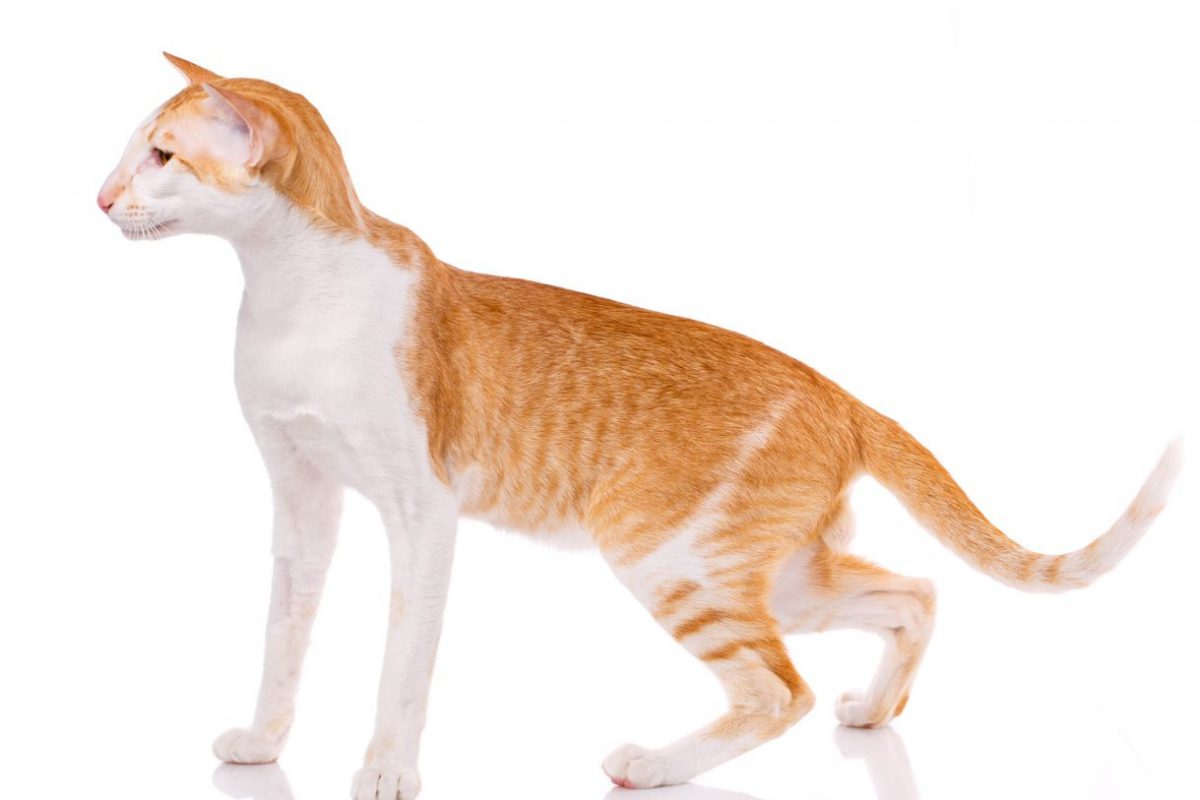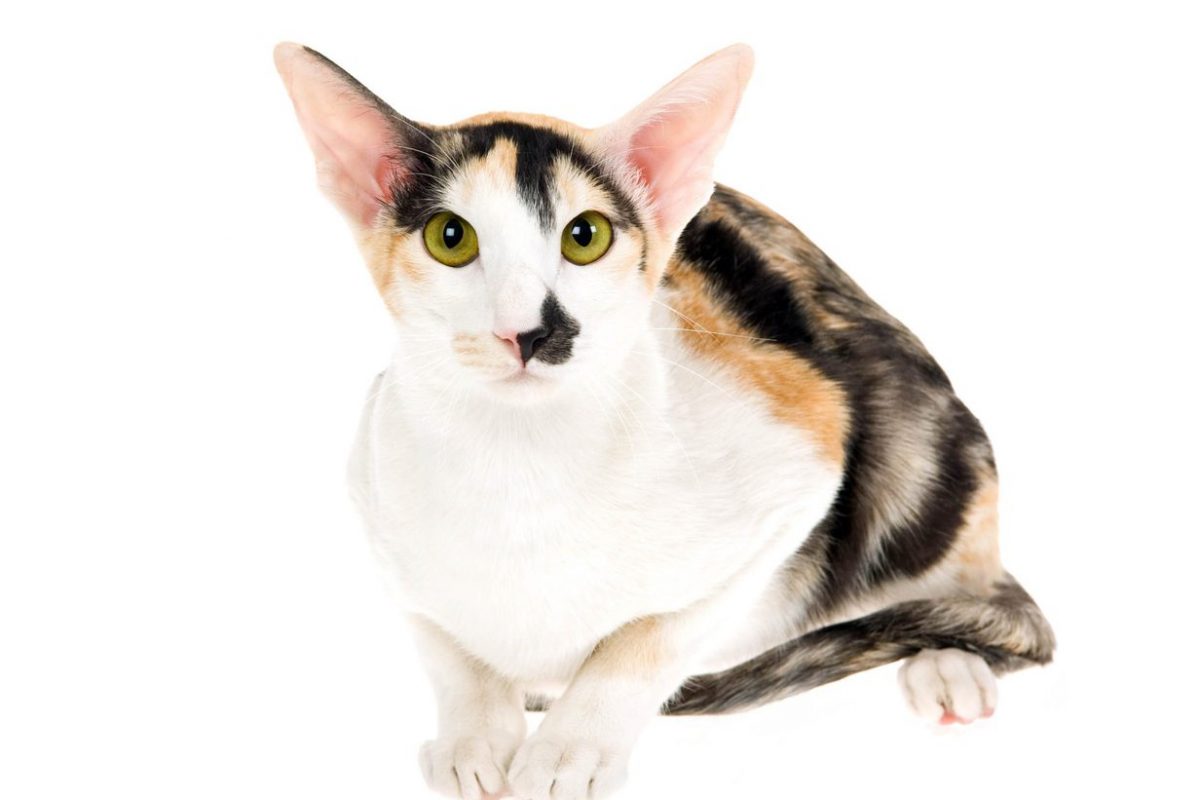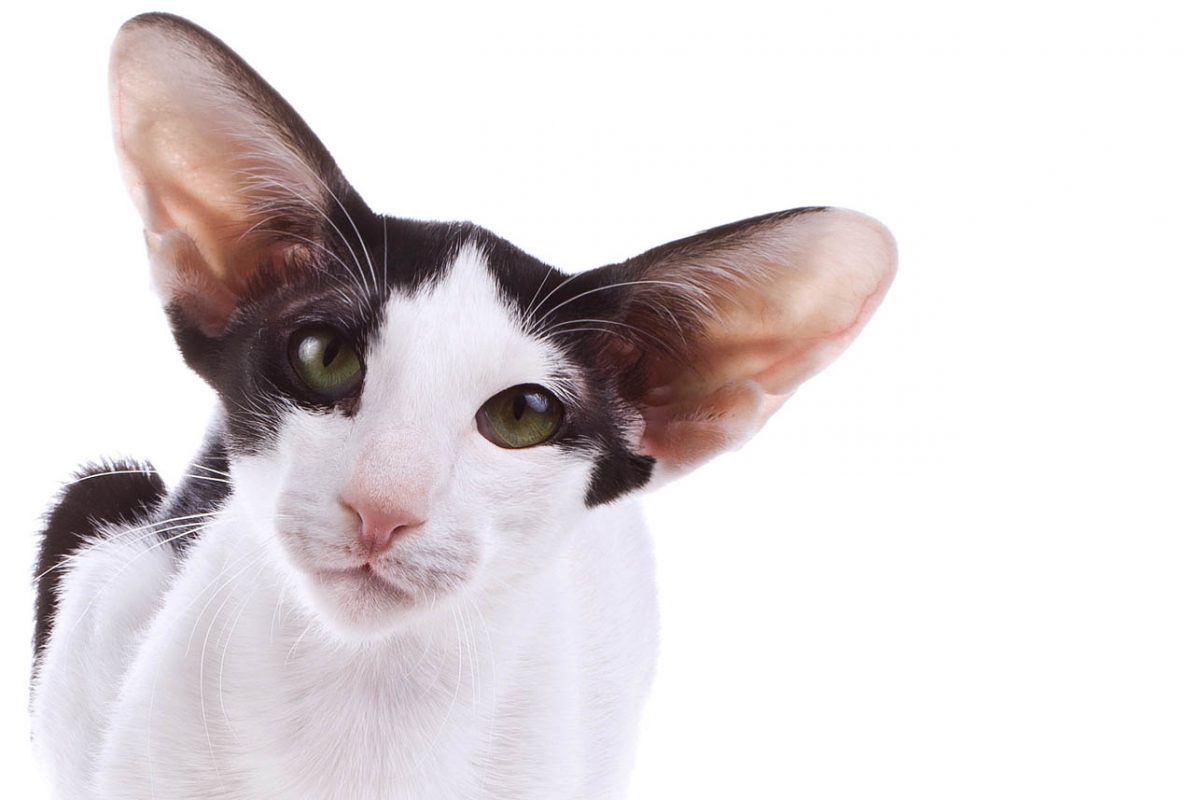Oriental Shorthair at a glance
|
About
The Oriental Shorthair is a domestic breed closely related to the Siamese. Breeders wanted to create a Siamese-type cat in different coat colours while maintaining the same modern Siamese type head with large ears and a long slender body that tapers to a whiplike tail.
Oriental cats are intelligent, loyal and devoted and are known to bond closely with their human family.
History
Siamese cats imported to the west occurred in a variety of colours, including chocolate brown, however, the Siamese breed club did not allow non-pointed cats. These cats went by the name ‘brown Siamese, Chinese, Japanese, Swiss Mountain Cat or Burmese’. In 1894 a brown Siamese was shown under the breed name Swiss Mountain Cat.
Harrison Weir makes reference to a dark Siamese owned by Mr Young of Harrogate, North Yorkshire in his book ‘Our Cats and All About Them’, dated 1889.
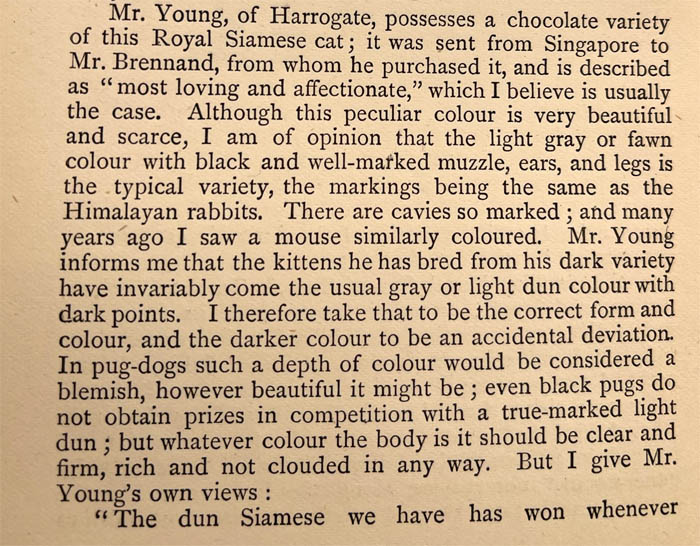
The Book of the Cat, written by Frances Simpson in 1903 talks of Sin Li and owned by Mrs Davies as follows;
a deep self-coloured chocolate brown cat. He was supposed to be one of the three Swiss Mountain Cats imported into the country
More reports of solid (self) chocolate Siamese came out in the 1920s and 1930s, but were generally thought of as poor quality seal point Siamese, and dismissed. By 1948 only 13 chocolate Siamese remained. Breeders decided to resurrect the non-pointed ‘chocolate’ cats, which would be a separate breed to the Siamese (which only accepted pointed). In 1951, Baroness Edit von Ullmann of Roofspringer Cattery and Mrs A. Hargreaves of Laurentide Cattery began a breeding programme to create solid (self) brown cats (Havanas) with the same conformation as the Siamese. Meanwhile, Mrs Munro-Smith (Elmtower) had produced Elmtower Bronze Idol, the first recorded Havana, the offspring of a black shorthaired domestic called Susanah (the daughter of a seal point Siamese, Tsiu-Chow) and a black longhaired domestic called Pickles.
The GCCF granted the Havana recognition in 1958, however, changed the name to Chestnut Brown Foreign but was changed back to Havana in 1972.
During the 1950s chocolate and blue cats produced lavender (lilac) offspring, which were referred to as blue. Mrs Armitage Hargreaves (Laurentide) produced a line of lavender self shorthairs. By 1970 the Foreign Lavender Group was formed under the Chairmanship of Mrs Angela Sayer with the aim of establishing the Foreign Lavender as a counterpart to the Havana. What we know is that blue carries dilute, and these ‘blue’ cats were actually the dilute of chocolate, otherwise known as lilac (or lavender).
Other self colours were developed and known as Foreigns, while the addition of other patterns such as tabby or tortoiseshell were known as Oriental Shorthairs. This distinction was not made in the United States and all colours and patterns were known as Oriental Shorthairs. The GCCF followed suit in the early 1990s for all breeds except the Foreign White. white British Shorthair cats and Siamese cats.
Cat geneticist Patricia Turner is responsible for Foreign White which was developed in 1962. Patricia had seen an overdeveloped photo of a lilac Oriental Shorthair and wanted to create an all-white Siamese with blue eyes without the known deafness associated with many white cats. By November, a breeding programme was established using white British Shorthairs and Siamese cats.
The first Orientals arrived in the United States in the 1970s and breeders crossed Siamese to American Shorthairs to introduce new colours to the breed. The Cat Fanciers Association accepted the Oriental Shorthair for championship status in 1977.
What’s the difference between an Oriental and a Siamese cat?

Siamese and Oriental Shorthair cats share the same long, lithe body type, the only difference is in the coat colour and pattern. Siamese cats have a light coloured coat with dark points; the Oriental can be any other colour and pattern except pointed.
Appearance
Body: The Oriental is a medium-sized cat with a long, lithe and muscular body. Legs are long and slender, with hind legs longer than the forelegs. The tail is long, slender tapering to a fine tip.
Head: Wedge-shaped with large ears, wide at the base, a long and straight nose and a medium-sized muzzle and jaw.
Eyes: Almond-shaped and medium size. Accepted eye colours are green or blue if the cat is white.
Coat: The coat should lie close to the body, be soft, fine and glossy, with no trace of a coarse texture. All coat colours and patterns are accepted except for pointed. According to the Cat Fanciers Association, the Oriental comes in 600 colours and patterns including solid coloured, bi-colour, smoke, tabby, white, pointed and white, calico and tortoiseshell.
Temperament
Oriental Shorthair cats have a similar temperament to their Siamese cousins. They are friendly, confident, outgoing, highly intelligent, lively, sociable, curious and affectionate and retain their kitten-like personality well into adulthood. Despite being an active breed, the Oriental Shorthair also loves to snuggle with its human family.
Orientals make a great family pet and get along with everyone, they are known to become extremely attached to their human companions and can form strong bonds with one particular person, although this is less common than with the Siamese.
We recommend a feline companion if you are out of the house for long stretches as Orientals thrive on company and can get lonely if left on their own for long periods of time.
Health
Oriental Shorthairs are a generally healthy breed, but like all breeds, they can be prone to certain health conditions. Not all Oriental Shorthairs will have or develop any or all of these diseases and breeders work hard to ensure their cats are screened and DNA tested to eliminate these conditions.
- Mucopolysaccharidosis: A group of lysosomal storage diseases characterised by the accumulation of mucopolysaccharides due to the impaired functions of lysosomal enzymes. Cats with MPS do not have any, or enough, of the enzymes alpha-L-iduronidase or arylsulphatase B which are needed to break down mucopolysaccharides (sugar molecule chains). Mucopolysaccharides help to build bones, cartilage, skin, tendons, corneas, and the fluid responsible for lubricating joints.
- Progressive retinal atrophy: Degeneration and atrophy of the retina, which is made of photosensitive cells known as rods and cones which convert light into electrical impulses and transport them to the brain via the optic nerve. The disease is caused by a mutation of the CEP290 gene, which encodes for the centrosomal protein 290 kDa which maintains the important structure known as the cilium in rod photoreceptors.
- Amyloidosis: A build-up of amyloid proteins in the heart, kidneys, liver or other organs. Amyloid is an abnormally folded protein produced in the bone marrow and deposited in tissues or organs causing damage by displacing normal cells. The liver is typically affected in Siamese and Oriental Shorthair cats.
Genetic testing is available for both of these diseases, potential kitten buyers should always check that breeders DNA their cats for inherited diseases the breed may be predisposed to.
Choosing an Oriental cat
Purebred cats should be purchased from a registered cat breeder which means the breeder is registered with a cat council and can provide a registration number and prefix. The prefix is the name of the cattery that is registered with the cat council and all cats produced by the breeder will carry the prefix name.
The best way to find a reputable cat breeder is to visit cat shows and ask a lot of questions as well as search for reviews and feedback online. Most breeders will have a Facebook page and there may also be Google reviews.
When choosing a purebred cat, decide if you would like a pet, show or breeder. A pet is a purebred cat who may have a minor fault, such as a kinked tail, or not be as ‘typey’ as the show cats. A show cat is a cat who closely meets the breed standard and is show-quality. Finally, the breeder cat is for registered breeders only, and any ethical cat breeder will not sell a breeder cat to somebody who is not a registered cat breeder.
If possible, visit the cattery and meet the parents and litter. The environment should be clean, and uncluttered, and the cats should be healthy, energetic and friendly.
Always leave a paper trail when speaking to breeders and find out exactly what you will be getting. Purebred cats should come with pedigree papers, and at an absolute minimum have had one or two vaccinations, and been regularly treated for parasites.
Care
The Oriental is easy to care for. Brush the coat once a week to remove loose hair and trim the claws as needed. Due to their trusting nature, we recommend the Oriental be an indoor-only cat or have access to a safe cat enclosure.
Grooming: Brush the coat once a week to remove loose hairs from the coat. Most cats don’t need a bath unless their coat has been contaminated with a potential toxin.
Dental care: Brush the teeth once a day with a cat toothbrush and toothpaste (never use human toothpaste on cats) to remove tartar and prevent gum disease and bad breath.
Claws: Trim claws every 4-6 weeks if your cat is indoors and provide a sturdy cat tree for your Oriental to remove the loose outer layer of the claws. As a rule, the cat tree should be 1.5 times the length of the cat.
Parasites: Treat for parasites which include fleas and intestinal worms, even indoor cats are at risk.
Diet: Feed a high-quality and age-appropriate diet and fresh drinking water.
Related breeds

- Siamese
- Peterbald
- Havana brown
- Foreign white
- Oriental longhair
Frequently asked questions
Are Oriental Shorthairs noisy? Due to its Siamese ancestry, the Oriental is a talkative cat, but not as much as the Siamese. They also have a sweeter voice than the raspy Siamese meow.
Are Oriental cats hypoallergenic? There is no evidence that the Oriental cat is hypoallergenic.
Are Oriental cats affectionate? Yes, the Oriental cat is an extremely affectionate cat who thrives on human companionship.
Do Oriental cats get along with other pets? Yes, the Oriental gets along well with other pets, especially if introduced from an early age.
How big do Oriental cats get? The Oriental is an average-sized cat, who weighs approximately 4.5 to 5kg as adults.
How much does an Oriental Shorthair cost? The cost of an Oriental Shorthair can range from $1,000 to $2,000. Show quality Orientals are more expensive than pet quality.
